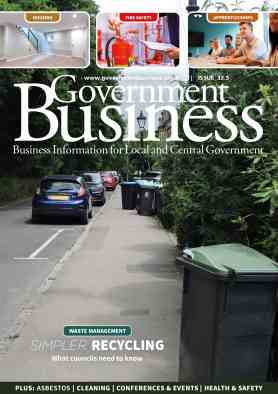A sound investment
 Money market funds are a type of collective investment. They pool investors’ money to purchase high quality and short duration assets, with each investor effectively owning a pro-rata share of the underlying assets. These funds allow investors to participate in a more diverse and high-quality portfolio than if they were to invest individually.
Money market funds are a type of collective investment. They pool investors’ money to purchase high quality and short duration assets, with each investor effectively owning a pro-rata share of the underlying assets. These funds allow investors to participate in a more diverse and high-quality portfolio than if they were to invest individually.
Money market funds are designed to provide security of capital and liquidity, but as investment products, they have associated risks. For a money market fund, there are three principal risks: interest rate risk; credit risk; and liquidity risk. It is important to understand how these risks are managed and how you can compare these funds.
Interest rate risk
All fixed income assets are impacted by changes in interest rates. When interest rates go up, the market value of a fixed income asset falls. The interest rate payable on that asset is lower than the rate which could be obtained in the market by purchasing a new bond. Conversely, when interest rates fall, the market value of a fixed income asset rises. For these reasons, it is important that a money market fund manager closely manages his exposure to interest rate risk.
Fund managers use the weighted average maturity (WAM) as a measure of interest rate risk. The longer the WAM of a fund, the greater the impact of any change in interest rates on that fund. The fund manager will construct the portfolio based upon his view of when interest rates are likely to change. He may be prepared to take more interest rate risk if he considers that there will be no change in interest rates for some time. Money market funds regularly publish WAM data, allowing investors to compare funds and identify those which have more susceptibility to interest rate risk.
Credit risk
Credit risk is the risk that an investment will not return the original amount. For a money market fund, credit risk crystallises when the fund has purchased assets issued by a company that is unable to pay back the initial investment. A money market fund will seek to manage credit risk by only purchasing high quality assets, thereby reducing the chance that any asset will default. The credit rating awarded to an asset by one of the independent credit rating agencies is an indication of credit quality. Investors can review the credit ratings breakdown of a money market fund to see the credit quality of the assets in the fund.
Another measure of credit risk in a money market fund will be the Weighted Average Life (WAL) of the fund. The WAL provides an indication of how susceptible the fund is to changes in credit quality; the longer the WAL, the greater the impact of changes in credit quality. Investors can review and compare the WALs of different funds to help identify a fund which has an acceptable level of credit risk.
Investors can also enquire about government money market funds, or funds that only purchase government debt such as gilts. These funds should have lower levels of credit risk than a money market fund which purchases a wider range of assets, but their return will be also be lower as the risk is less.
Liquidity risk
In a money market fund, investors have same-day access to their cash. Liquidity risk arises in a money market fund if the fund is not able to provide this access. In order for the fund to be able to return cash to investors, it must either have a regular supply of maturing assets (‘natural liquidity’) or be able to sell assets in the market to generate cash. If a fund is unable to sell assets in the market for whatever reason, it will have to rely upon the repayments received from maturing assets.
A money market fund will manage liquidity risk in a number of ways. Key to this risk management will be a close relationship with the investors to understand their liquidity needs and when they are likely to need access to cash. In addition, and to offset any unexpected redemption requests, all funds within the membership of the Institutional Money Market Funds Association (IMMFA) will hold no less than five per cent of assets in securities which mature on the next day, and 20 per cent of assets in securities that mature within a week.
The fund manager will then review whether these minimum amounts are appropriate in relation to his investors’ needs, and the liquidity of the market. Investors can assess how liquid a fund is by enquiring about the liquidity breakdown of the fund. A more liquid fund will have a greater percentage of short dated assets.
Regulatory and industry changes
As well as understanding the risks associated with a money market fund and how these are managed, there are a couple of important industry developments that investors should be aware of. Historically in Europe there has been no single definition of a money market fund. This has seen a plethora of funds being referred to as a money market fund. Commentary about money market funds could then relate to any number of different products.
This will all change next year. In May 2010, the European securities regulators (CESR) issued guidance which defines a money market fund. The definition introduces two sub-groups – short-term money market funds and money market funds. There is a clear differential in risk between the two sub-groups with short-term money market funds – including funds represented by IMMFA – having shorter durations and higher credit standards.
The introduction of this definition throughout Europe should provide much needed clarity to investors, by ensuring that only those funds which have security of capital as their principal objective are capable of being called a money market fund. By limiting the money market fund name to specific funds, the potential for confusion to arise when comments are made about the product should disappear. This guidance will be introduced by national regulators, such as the FSA in the UK, by July 2011. After this date, only funds which adhere to the definition will be capable of calling themselves a money market fund.
The money market fund industry has also taken action to improve the resilience of the product by introducing additional obligations that funds must follow. Those funds that are represented by IMMFA all follow a Code of Practice. This Code is designed to deliver best practice standards in the management and operation of a money market fund, and was amended at the end of 2009.
Under the revised version of the Code, IMMFA members are required to provide additional disclosures, allowing investors to better compare and contrast funds. IMMFA funds are also required to operate a formal liquidity management policy as well as having minimum amounts of overnight and one week securities. These requirements are more onerous than any European regulatory standards. If you are considering investment in a money market fund, enquiring about IMMFA membership should be one of the questions you ask the fund manager.
A good investment opportunity
Money market funds, like all collective investments, provide the benefit of risk diversification. When you invest in a money market fund, your investment is pooled with numerous other investors, and used to purchase a range of assets. Funds are legally required to diversify their investments, and hold many assets at any point in time. As a shareholder in the fund, your investment equates to a proportion of each underlying asset. If any individual asset were to lose value, the impact on the value of a share in the fund should be small. This is notably different from placing cash in a bank deposit. With bank deposits, you are exposed to only one entity – the bank. And if that bank were to fail, you could lose all of your investment.
Diversification is a key mitigant of credit risk, and should always form part of any investment strategy. In addition to this benefit, money market funds provide other important advantages. By investing in a fund, you will have access to the professional cash management capabilities of the fund manager. These will include extensive credit research resources and dedicated fund managers.
Power in numbers
You will also benefit from the bargaining position of these professional cash managers who, because of their size, are able to secure deals which would not be offered to smaller investors. The combination of this buying power, resources and experience provide a facility which could not be achieved by individual investors without significant cost and resource implications. This can be accessed for relatively small fees by investing in a money market fund.
Finally, money market funds are separate legal entities. The assets held in the fund are held independently of the fund management company. This provides an additional layer of security which again would not be available if you invest directly in a deposit with a bank.
For all of these reasons, a money market fund should be one of the first products that is considered when investing short-term cash surpluses.
For more information:
Web: www.immfa.org


